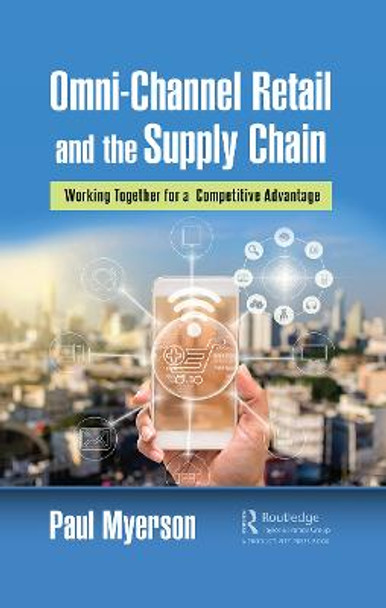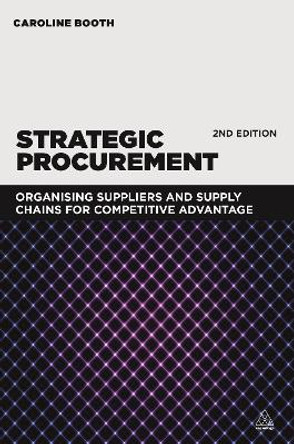Description
Omni-Channel Retail and the Supply Chain
The days of going to the local department store to buy a television, view the options available, and make a purchase now seem "quaint." The emergence of the internet, smartphones, social media, and other technologies has opened a world of new options for consumers (and businesses) to review, research, and buy online with an ever-increasing array of delivery options.
The emergence of e-commerce has resulted in what is commonly known today as "omni-channel" marketing, in which customers engage with companies in a variety of ways, including in a physical store or online via websites and mobile apps. This process puts the supply chain "front and center," as consumers are increasingly demanding and browsing, buying, and returning goods through various channels, not just the traditional "brick and mortar" way. To accomplish this with high levels of service while remaining profitable requires real-time visibility of inventory across the supply chain and a single view of consumers as they continuously move from one channel to another.
While this is a boon to consumers, it has made the already complex global supply chain even more challenging to manage. On top of that, the 2020 Covid19 pandemic has accelerated this omni-channel retail trend, as consumers need even more ways to order and additional options for last-mile delivery, such as curbside pickup. Covid19 has exposed a lack of flexibility and readiness, resulting in shortages of everything from toilet paper and meats to personal protective equipment (PPE) and ventilators. It has been a real-life example of the "bullwhip effect," where variability at the consumer end of the supply chain results in increased variability as one goes upstream towards distributors, manufacturers, and suppliers. This results in shortages, misallocations, and increased costs.
No longer can a manufacturer, distributor, or retailer of consumer products just "fill the pipeline" and wait for orders to come in. Now, they must anticipate various purchases and delivery items, while at the same time minimizing costs. To do this is no easy task, requiring a Lean, agile, and responsive supply chain.
Until now, there was no existing "playbook" for organizations to navigate their way through this new world. This book describes the impact of omni-channel marketing on the supply chain and logistics functions, and is intended to help management meet the needs of not only today's ever-changing world but to anticipate what may be required in the future to achieve superior customer service, profitability, and a competitive advantage.
About the Author
Paul Myerson has been an Instructor of Management at Monmouth University since 2017. He holds a B.S. in Business Logistics from Pennsylvania State University and an MBA in Physical Distribution from Temple University. Myerson has an extensive background as a supply chain and logistics professional, consultant, and teacher (most recently at New Jersey City University, Kean University, and Lehigh University).
Prior to joining the faculty at Monmouth University, Mr. Myerson has been a successful change catalyst for a variety of clients and organizations of all sizes. His 30 years of experience in Supply Chain Management, Logistics Strategies, and Operations Systems have resulted in bottom-line improvements for companies such as General Electric (GE), Unilever, and Church & Dwight (Arm & Hammer).
Professor Myerson created and has marketed a Supply Chain Planning software tool for Windows to a variety of companies worldwide since 1998 and writes a column on Lean Supply Chain for Inbound Logistics Magazine and a blog for Industry Week magazine.
Reviews
The shift to omni-channel represents one of the most profound transformations in distribution and to supply chain as a whole. Getting it right will make the difference between winners and losers in the next few years. A must read to navigate these changing waters.
- Ron Kubera, Senior Vice President and General Manager, E2open
The growth in online retailing represents a revolutionary change that is affecting companies of all kinds. And, the development of omni-channel distribution is a key part of this revolution. Myerson's book provides a thorough coverage of what may be one of the most important business developments to hit the business landscape since the Internet.
- Robert J. Trent, Ph.D., Author of Supply Chain Financial Management
Paul Myerson neatly breaks down the omni-channel retail supply chain strategy with practical, step-by-step, guidance for companies to consistently satisfy consumer demand and enhance profit margins while navigating frequent regional market hiccups as well as weathering the occasional global disruption, like what we are facing now with the COVID-19 pandemic.
- William J. Bajor, Ph.D., Director, Graduate and Extended Studies, East Stroudsburg University
Myerson's text is a fascinating exploration of omni-channel supply chains that starts with their history and goes on to discuss best omni-channel retail strategies and the future of the omni-channel approach. Reading this book will be time well spent for both marketing and supply chain management students as well as industry practitioners.
- Dr. Mikhail M. Sher, Assistant Professor, Department of Management and Leadership, Leon Hess Business School, Monmouth University
Book Information
ISBN 9780367641979
Author Paul Myerson
Format Hardback
Page Count 266
Imprint CRC Press
Publisher Taylor & Francis Ltd
Weight(grams) 508g






